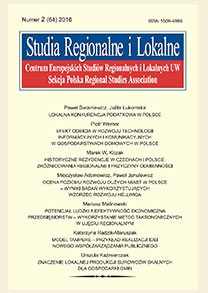Polityka spójności jako narzędzie stymulacji współpracy między miastami – przykład INTERREG i URBACT
Cohesion Policy as a tool to stimulate cooperation between cities – the example of INTERREG and URACT in Poland
Author(s): Adam PłoszajSubject(s): Social Sciences
Published by: EUROREG - Uniwersytet Warszawski, Regional Studies Association - Sekcja Polska
Keywords: cooperation between cities; INTERREG programme; INTERREG IIIB CADSES; INTERREG IIIB BSR; URBACT
Summary/Abstract: The paper discusses selected tools within Cohesion Policy that stimulate cooperation between cities. Subject to analysis are two programmes from 2004−2006: INTERRREG and URBACT. In the case of INTERREG programmes, the analysis pertains to the largest Polish cities (31 most populous cities and the Silesian and Tri-City conurbations), while in the case of URBACT, all the cities that were beneficiaries of the programme were taken into account. The results of the projects are usually of the soft type and involve transfer of good practices, building institutional capacity, and human capital. In this respect, the results of the analyzed projects should be considered at least satisfactory, although the number and scale of the completed projects does not allow for clear and measurable effects to be perceptible in a country-wide perspective.
Journal: Studia Regionalne i Lokalne
- Issue Year: 12/2011
- Issue No: Spec.Iss.
- Page Range: 57-66
- Page Count: 10
- Language: Polish

